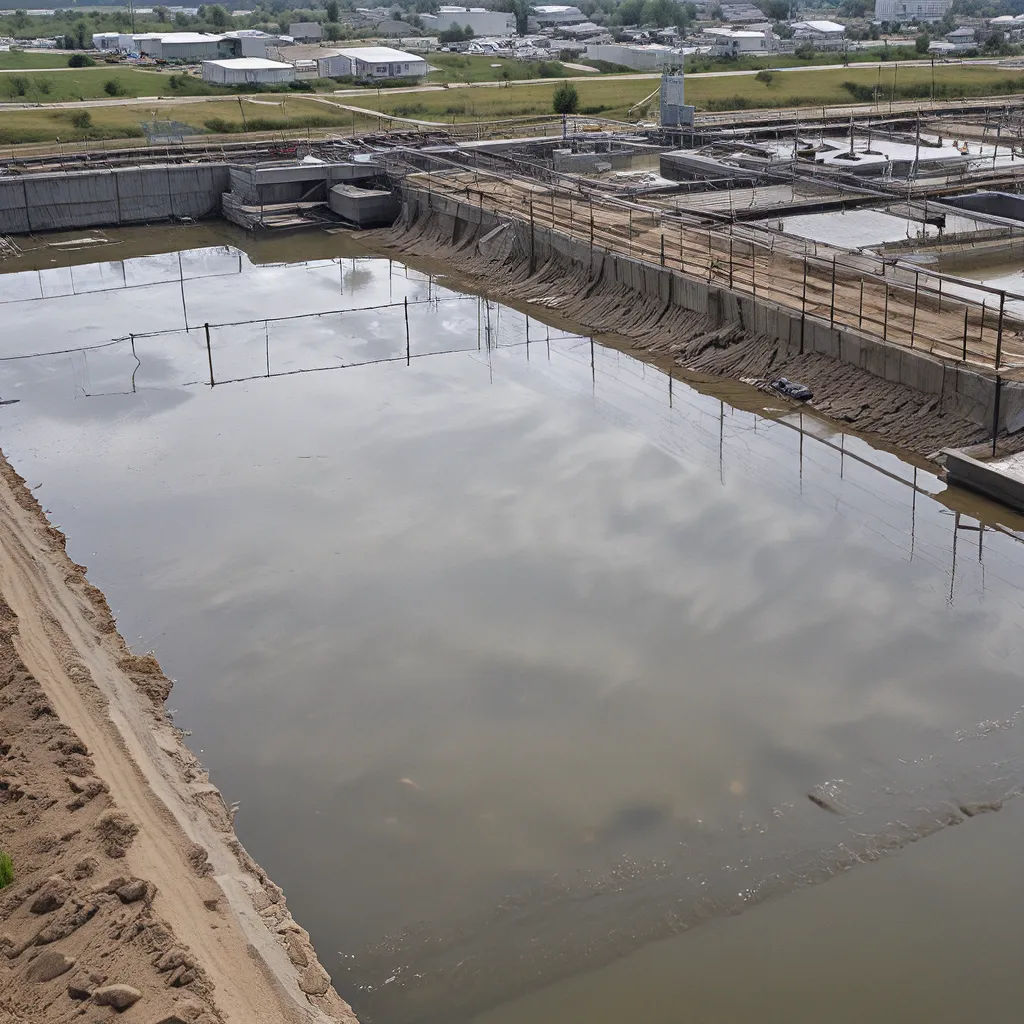
As a wastewater treatment professional, I’ve witnessed firsthand the increasing challenges that extreme weather events pose to our critical infrastructure. From devastating floods and hurricanes to intense droughts and wildfires, the impacts of a changing climate are becoming more evident with each passing year. And as these extreme events grow in frequency and severity, it’s become clear that our wastewater systems need to be more resilient than ever before.
But what exactly does “resilience” mean in the context of wastewater treatment? And how can we, as an industry, proactively prepare for the challenges ahead? In this comprehensive article, I’ll explore these crucial questions, providing practical insights and strategies to help our wastewater facilities weather the storm.
Extreme Events and the Wastewater Landscape
The past decade has been a sobering reminder of the destruction that extreme weather can wreak on our communities. From the devastating floods in Alaska to the record-breaking hurricane seasons in the Atlantic, it’s clear that no region is immune to the impacts of a changing climate.
And when these extreme events strike, one of the first casualties is often our wastewater infrastructure. Flooding can overwhelm treatment plants, leading to the release of untreated sewage into our waterways. Droughts can strain water supplies, making it increasingly difficult to maintain proper treatment processes. And as sea levels rise, coastal wastewater facilities face the looming threat of storm surge and coastal erosion.
The consequences of these failures can be dire, both for public health and the environment. Waterborne diseases, contaminated drinking water, and damaged ecosystems are just a few of the potential outcomes when our wastewater systems are compromised.
According to the Climate Resilience Toolkit, floods are among the deadliest of all weather-related hazards in the United States, accounting for approximately 98 deaths per year. And the threat is only expected to grow, as heavy downpours and flash floods become more common.
Building a Resilient Wastewater Infrastructure
So, how can we ensure that our wastewater facilities are prepared to withstand the challenges of the future? The key lies in building resilience – a multifaceted approach that encompasses everything from infrastructure upgrades to emergency planning.
Infrastructure Upgrades
One of the most critical components of building resilience is upgrading our wastewater infrastructure. This can include measures like:
- Elevating critical equipment: Raising pumps, electrical systems, and other vital components above the anticipated flood level can help prevent damage during extreme weather events.
- Implementing backup power systems: Ensuring that wastewater plants have access to reliable backup power, such as generators or renewable energy sources, can keep operations running even when the grid goes down.
- Enhancing stormwater management: Improving the capacity and efficiency of stormwater drainage systems can help mitigate the impact of heavy rainfall and floods.
- Incorporating green infrastructure: Integrating natural elements like wetlands, permeable pavements, and rain gardens can help absorb excess water and reduce the strain on traditional drainage systems.
As the Northeast Interstate Water Pollution Control Commission (NEIWPCC) notes, these types of infrastructure upgrades can be crucial in helping wastewater facilities withstand the impacts of extreme weather events.
Emergency Planning and Preparedness
But infrastructure upgrades are only part of the equation. Emergency planning and preparedness are also essential for building resilience in the face of extreme events.
This includes developing comprehensive emergency response plans that outline procedures for everything from evacuations to temporary treatment solutions. It also means training staff on emergency protocols and conducting regular disaster drills to ensure that everyone is prepared to respond quickly and effectively.
The City of Seattle’s climate preparedness guide highlights the importance of collaboration in emergency planning, encouraging wastewater facilities to work closely with local emergency management agencies, public health departments, and other key stakeholders.
By anticipating potential threats and rehearsing emergency responses, wastewater treatment providers can be better equipped to navigate the unpredictable challenges posed by extreme weather events.
The Human Dimension of Resilience
Of course, building a resilient wastewater infrastructure is not just about physical infrastructure and emergency planning. It also requires a deep understanding of the human impact of these extreme events.
Mental health is a critical, yet often overlooked, aspect of disaster preparedness and response. Extreme weather events can be deeply traumatic, leading to anxiety, depression, and even post-traumatic stress disorder (PTSD) among affected communities.
As the Climate Resilience Toolkit notes, children are particularly vulnerable to these mental health disturbances in the wake of extreme weather events. Providing targeted support and resources for employees, their families, and the broader community can be a crucial component of building overall resilience.
Embracing the Resilience Factor
At the end of the day, building resilience in the face of extreme weather events is not just about protecting our wastewater infrastructure. It’s about safeguarding our communities, preserving our environment, and ensuring the long-term sustainability of our critical water systems.
And as the industry leader in wastewater treatment services, I believe we have a responsibility to lead the charge in this vital effort. By investing in innovative solutions, fostering cross-sector collaboration, and prioritizing the human element of resilience, we can help create a future where our wastewater systems are better prepared to weather any storm.
Sure, the challenges ahead may seem daunting, but I’m optimistic about the resilience factor. After all, when the going gets tough, the wastewater professionals get going. And I, for one, am ready to take on the storm.